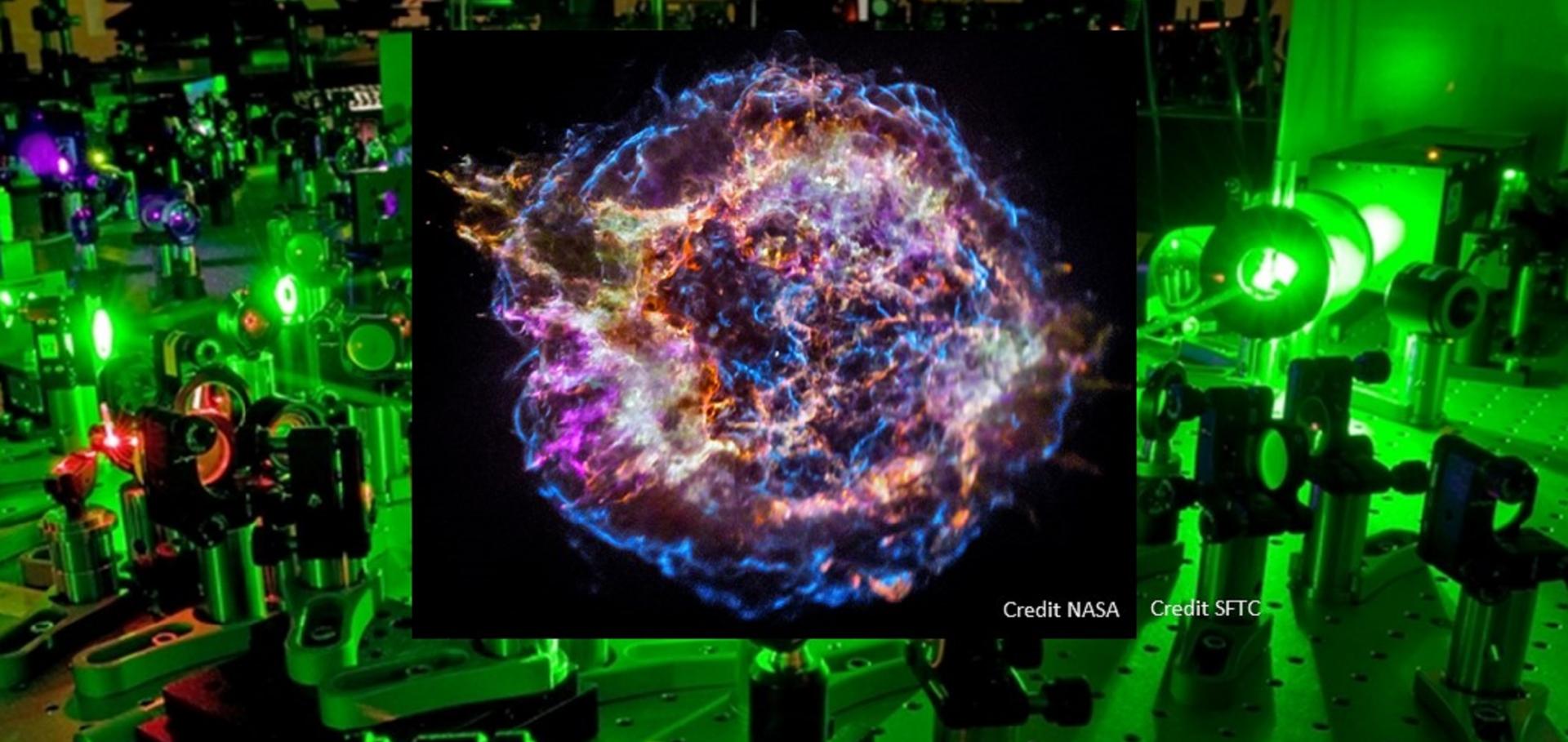Laboratory evidence of dynamo amplification of magnetic fields in a turbulent plasma
Nature Communications Springer Nature 9 (2018) 591
Abstract:
Magnetic fields are ubiquitous in the Universe. Diffuse radiosynchrotron emission observations and Faraday rotation measurements have revealed magnetic field strengths ranging from a few nG and tens of µG in extragalactic disks, halos and clusters [1], up to hundreds of TG in magnetars, as inferred from their spin-down [2]. The energy density of these fields is typically comparable to the energy density of the fluid motions of the plasma in which they are embedded, making magnetic fields essential players in the dynamics of the luminous matter. The standard theoretical model for the origin of these strong magnetic fields is through the amplification of tiny seed fields via turbulent dynamo to the level consistent with current observations [3–7]. Here we demonstrate, using laser-produced colliding plasma flows, that turbulence is indeed capable of rapidly amplifying seed fields to near equipartition with the turbulent fluid motions. These results support the notion that turbulent dynamo is a viable mechanism responsible for the observed present-day magnetization.On the maximum energy of non-thermal particles in the primary hotspot of Cygnus A
Monthly Notices of the Royal Astronomical Society Oxford University Press (OUP) 473:3 (2018) 3500-3506
Cosmic-ray acceleration by relativistic shocks: limits and estimates
Monthly Notices of the Royal Astronomical Society Oxford University Press (OUP) 473:2 (2018) 2364-2371
Amplification of perpendicular and parallel magnetic fields by cosmic ray currents
Monthly Notices of the Royal Astronomical Society Oxford University Press 469:2 (2017) 1849-1860
Abstract:
Cosmic ray (CR) currents through magnetized plasma drive strong instabilities producing amplification of the magnetic field. This amplification helps explain the CR energy spectrum as well as observations of supernova remnants and radio galaxy hotspots. Using magnetohydrodynamic simulations, we study the behaviour of the non-resonant hybrid (NRH) instability (also known as the Bell instability) in the case of CR currents perpendicular and parallel to the initial magnetic field. We demonstrate that extending simulations of the perpendicular case to 3D reveals a different character to the turbulence from that observed in 2D. Despite these differences, in 3D the perpendicular NRH instability still grows exponentially far into the non-linear regime with a similar growth rate to both the 2D perpendicular and 3D parallel situations. We introduce some simple analytical models to elucidate the physical behaviour, using them to demonstrate that the transition to the non-linear regime is governed by the growth of thermal pressure inside dense filaments at the edges of the expanding loops. We discuss our results in the context of supernova remnants and jets in radio galaxies. Our work shows that the NRH instability can amplify magnetic fields to many times their initial value in parallel and perpendicular shocks.Numerical modeling of laser-driven experiments aiming to demonstrate magnetic field amplification via turbulent dynamo
Physics of Plasmas AIP Publishing 24:4 (2017) 041404


